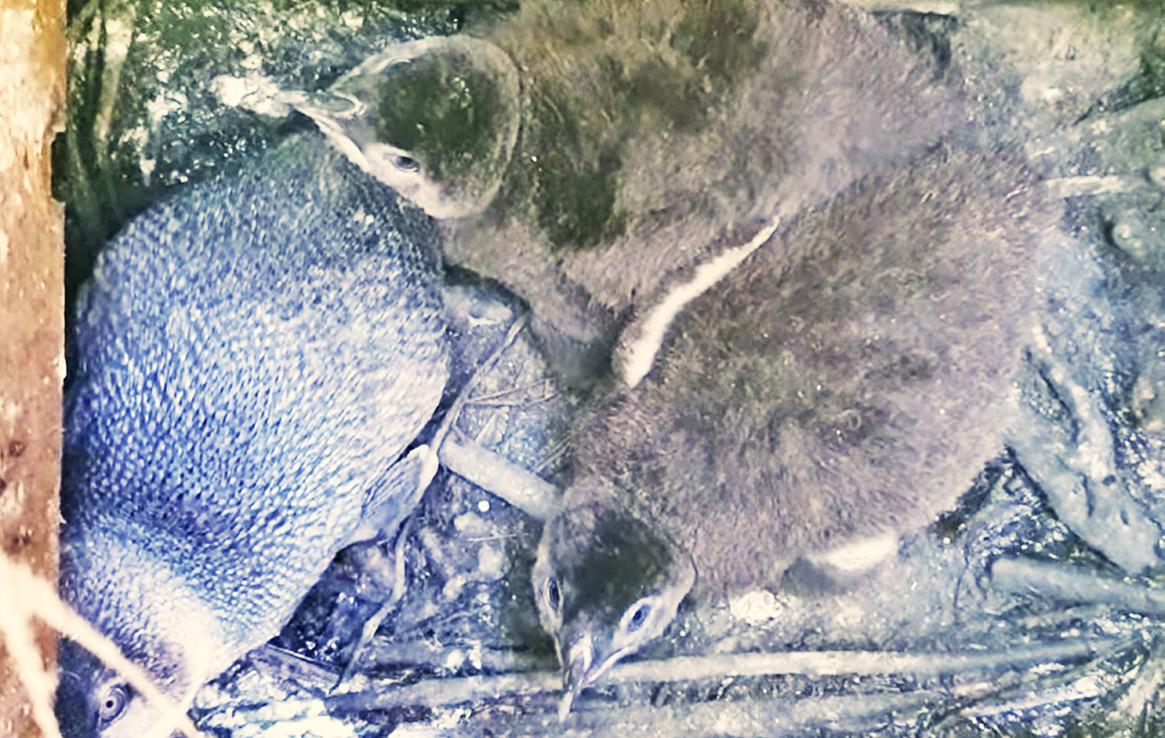
3 minute read
Election of officers
done during the cleaning of the boxes. It is not yet complete but it’s looking pretty good so far with possibly close to two hundred sightings. Lots of juvenile hihi from last season have been spotted flashing their new PIT tags.
Sugar-water consumption has been topsy-turvy recently with tūī lording it over three of the feeding stations. This is a pointless exercise for them since they cannot get at the sugar, but it puts pressure on the hihi (and the korimako/bellbird) to visit the other feeders. Fingers crossed the tūī will give up once they realise there is no benefit in this strategy.
Advertisement
Deb will be remaining on the Island for her second season of hihi work and we shall welcome a new hihi volunteer, Freya O’Sullivan, who will join us once Alert Levels decrease. Mhairi will continue providing her expert knowledge and advice, mostly from off the Island, but will be back frequently, especially once banding of chicks gets underway.
Kōkako
In contrast, the kōkako team are anxiously wondering whether we shall be able to band chicks at all this season. It is a serious matter if chicks fledge unbanded, since a much bigger effort is needed to catch and band them once they have left the nest, and some of them prove to be uncatchable.
Why is it so important to get the kōkako banded? If we want to maximise the genetic diversity in the population, we need to be able to identify each bird individually, so that if we get the chance to translocate some to a different site, we can decide which should go and which should stay, as well as which would most benefit the site they are going to. Having unbanded birds on the Island – birds whose parentage is unknown – would also leave a big hole in our carefullyconstructed database.
For the moment, we have to be content to wait and see when we can start work. Fortunately Deb has been able to send us some observations made during her hihi work. From these we are able to confirm what we suspected a few months ago, that Skye and Bátor are together, which almost certainly means their ex-partners, Ocarina and Dawn, are also still together (they were seen together shortly before lockdown). This is not a good scenario since Ocarina and Dawn are brother and sister, so we shall be hoping their union is unproductive.
Seabirds
For this season we had planned early checks on the 22 kuaka/diving petrel nest boxes in an attempt to record the timing of egglaying. The boxes were checked on the 1 July when there were no signs of activity and again on the 8th when four boxes appeared to have been visited. A final pre- lockdown visit was made on 1 August when two of the burrows were occupied by adults one of which had been banded in 2016. No eggs had been laid by that date.
Monitoring the kororā/little penguin nest boxes also started on 1 July and continued until 14 August. Three of the four display boxes were regularly occupied, while the fourth requires some maintenance before it can be inspected. Ranger Emma reported that in mid-October the three display boxes continued to be used. Two held medium-sized chicks and the third held large chicks whose blue feathers were beginning to show through the down.
Last season some of the other 29 kororā boxes suffered repeated interference from curious visitors, so they have now been moved out of sight of the track. Before lockdown, box 4 was regularly occupied. Thanks to Gerhard Wette for his help with the penguin monitoring.
Compiled by Kay Milton with contributions from Emma Dunning, Morag Fordham, Deborah Smith and John Stewart.

SPRINGTIME: Adult kororā and two chicks in a nesting box. Photo / Emma Dunning.








